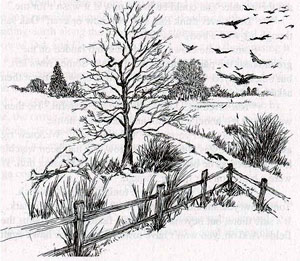Blog - General
Fun Crow Facts
Fun Facts About American Crows
· American Crows congregate in large numbers in winter to sleep in communal roosts. These roosts can be of a few hundred up to two million crows. Some roosts have been forming in the same general area for well over 100 years. In the last few decades some of these roosts have moved into urban areas where the noise and mess cause conflicts with people.
· Young American Crows do not breed until they are at least two years old, and most do not breed until they are four or more. In most populations the young help their parents raise young for a few years. Families may include up to 15 individuals and contain young from five different years.
· The American Crow appears to be the biggest victim of West Nile virus, a disease recently introduced to North America. Crows die within one week of infection, and few seem able to survive exposure. No other North American bird is dying at the same rate from the disease, and the loss of crows in some areas has been severe.
· In some areas, the American Crow has a double life. It maintains a territory year round in which the entire extended family lives and forages together. But during much of the year, individual crows leave the home territory to join large flocks at dumps and agricultural fields, and to sleep in large roosts in winter. Family members go together to the flocks, but do not stay together in the crowd. A crow may spend part of the day at home with its family in town and the rest with a flock feeding on waste grain out in the country.
· Despite its tendency to eat road kill, the American Crow is not specialized to be a scavenger, and carrion is only a very small part of its diet. Though their bills are large, crows can’t break through the skin of even a gray squirrel. They must wait for something else to open a carcass or for the carcass to decompose and become tender enough to eat.
· Crows are crafty foragers that sometimes follow adult birds to find where their nests are hidden. They sometimes steal food from other animals. A group of crows was seen distracting a river otter to steal its fish, and another group followed Common Mergansers to catch minnows the ducks were chasing into the shallows. They also sometimes follow songbirds as they arrive from a long migration flight and capture the exhausted birds. Crows also catch fish, eat from outdoor dog dishes, and take fruit from trees.
· Crows sometimes make and use tools. Examples include a captive crow using a cup to carry water over to a bowl of dry mash; shaping a piece of wood and then sticking it into a hole in a fence post in search of food; and breaking off pieces of pine cone to drop on tree climbers near a nest.
· The oldest recorded wild American Crow was 16 years old. A captive crow that died in New York lived to be 59 years old.
· A video at the University of Nebraska’s Biological Sciences Department shows a captive Blue Jay, another formidable, intelligent member of the Corvidae family, tear a sheet of paper, bend it at the end, and use it to reach out and drag a lone peanut into its cage.
